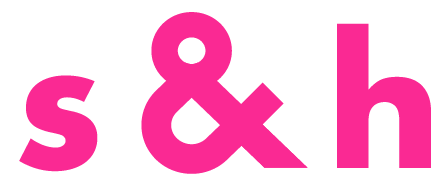5 Principles of a Learning Organization
Over the past months of the coronavirus crisis, we’ve had to pivot how we work, communicate and collaborate remotely. We’ve shifted how we learn, acquire new skills and access information. As we prepare for the future, we see the critical need for new models of learning at sparks & honey. More than ever, we see the value and need for these principles in every organization.
The limitations of how most of us learn
Many of us have scrambled to adjust to this new cultural and business environment. At sparks & honey, we work collaboratively and literally, out in the open—on the walls around the office and in person with hundreds of guests coming through the office on a weekly basis. All of this was core to how we worked and learned. The physical wall space was used to collaborate and exchange ideas, to provide feedback, and to display our methodologies. Since this crisis, we’ve had to shift that practice into a virtual environment.
Across businesses and organizations, many of us have discovered that we weren’t quite ready with tools, technology or skills to respond to this crisis. School districts and parents are still working through challenges to deploy and participate in remote learning. We see the need for skills, innovation and leadership that address the cyber poverty gap in critical industries.
These pressures have uncovered the limitations and gaps of traditional learning models. They are too slow. They’re closed. They are limited to a point in time. They’re time-intensive and cost-expensive. They’re often irrelevant. They do not adequately prepare us for disruptive shifts in culture, like a massively disruptive global pandemic.
As we move forward and reset, this crisis is highlighting important areas of focus. One critical need is where and how we learn.
Learning as a system
We need a learning model that prepares people for disruption and strengthens our capacity to thrive in a vuca world.
Accelerating change, the growing intersectionality of diversity (visible, invisible, and cognitive), and the uncertainty of our world require us to restructure and rebuild current models of learning.
We need a systematic way to inquire and expand the questions we are asking. We need an approach to learning that is always on and constantly updating. Learning organizations need open and curious minds; agile, novel and adaptive thinkers; a mindset of growth; future-makers and change catalysts.
The s&h model of learning
We’ve been building a Learning Organization over the last eight years. Grounded in the Laws of Culture, these are the principles of our learning organization at sparks & honey. These principles are especially critical in times like this.
1. Curiosity is not an attitude - it’s a skill
In a learning organization curiosity is not just an attitude. It’s a fundamental skill at the core of any company dedicated to learning. It’s a practice that should be developed and mastered.
Our culture briefing—now streamed live from our living rooms—is just one place where we build the muscle of curiosity. In these discussions, we don’t present conclusions, but we explore fringe ideas. We look for patterns. We pose radical questions to open minds and identify innovation.
2. Apply knowledge and skills across categories and industries
We value specific expertise with subject matter experts and the mastery of skills, but culture isn’t siloed—it’s horizontal. So, we’re developing people and machines to make connections and identify patterns across categories and industries. We have staffed cultural anthropologists to work on technology builds. We have brought the expertise of our data sciences team to produce work on brand messaging.
3. Prioritize experimentation and experiential learning
Of course, we are looking for a highly skilled workforce. But we don’t believe that the most valuable skills come from formal classrooms or Ivy League degrees. They come from real-world experiences that feed a passion to experiment.
We promote learning that is self-directed, experiential and built on experimentation. Instead of a training reimbursement for a pre-selected list of on-line management courses, we offer “Curiosity Cash”. With this program, we let staff members choose their own courses and experiences where they can explore their passions and expand their skills. Our staff ran with it. One staff member took a class in fiction writing to help tell more compelling narratives and another took stand-up comedy classes to help with presentation skills.
That spirit of experimentation and experiential learning drives adaptability and resilience.
4. Strive for bias balance, not bias removal
We challenge our perspectives by bringing the outside in, whether in expert opinions, thoughts leaders or any diversity of thought. Traditional methods of learning look to remove bias. But humans are complex and biased. And so are machines. Biases are data points about what humans believe and understand and also about how machines behave and operate. They uncover gaps in the way we collect, interpret and use information. To close those gaps and normalize those biases, we need more data not less.
As a learning organization, we bring in as many perspectives as we can to check our biases. Our Advisory Board, along with guests from the outside, join us daily in our culture briefings. They bring different perspectives and expertise. Online viewers of the briefing are encouraged to challenge ideas being discussed. The inclusion of many voices strengthens the output of our work.
5. Humans + Machines learn together
Augmented and accelerated learning requires a system of both humans and machines (AI) that is always-on. Q™, our AI-powered cultural intelligence platform, combines the power of human and machine intelligence to decode culture. Human analysis, empathy and insight will always be necessary. We must learn and hone those skills. But machine learning and Artificial Intelligence can amplify the learning process – they make teams better, smarter and faster. It’s almost like giving them learning superpowers.
We’ll continue to unpack these principles in our work and in our culture briefings. What are the principles of learning in your organization?


